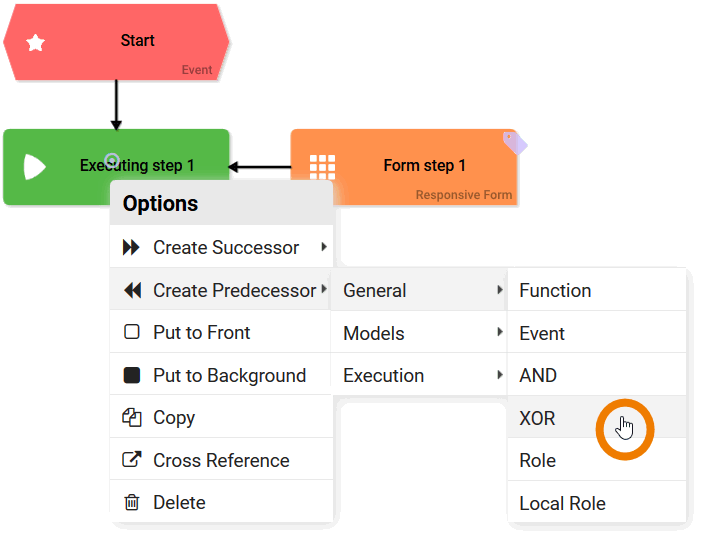The basics of Event-driven Process Chain (EPC) modeling are explained in this chapter. The BPaaS Process Editor offers you plenty of freedom for modeling. If your model's sole purpose lies in process documentation, then you may connect all elements as you please. If the EPC will be the basis of an executable Process App, then some connections are not permitted.
A basic rule of modeling an EPC is: Events are passive (for example Request received), Functions are active (for example Replying to Request). The Process Editor assists you in role-consistent modeling. When creating new elements all permissible predecessors and successors can be viewed in the context menu:

Should you create a connection that may prove troublesome to the model's execution, then a corresponding error message will be displayed in the editor.
Example: An event may not be followed by another event.

Please be aware that no synchronization will occur between simultaneously opened browser tabs and windows while working on models and forms. Changes made in one window/tab will not automatically appear in a second window/tab. In order to display changes made in a separate window/tab you need to reload your current page.
